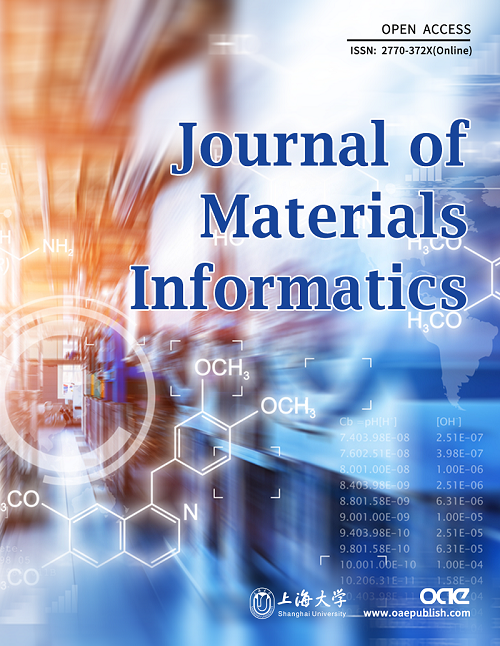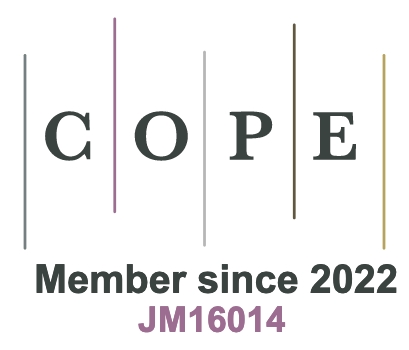REFERENCES
1. Geng, J.; Ji, S.; Jin, M.; et al. Ambient electrosynthesis of urea with nitrate and carbon dioxide over iron-based dual-sites. Angew. Chem. Int. Ed. Engl. 2023, 62, e202210958.
3. Sun, C. N.; Wang, Z. L.; Lang, X. Y.; Wen, Z.; Jiang, Q. Synergistic effect of active sites of double-atom catalysts for nitrogen reduction reaction. ChemSusChem 2021, 14, 4593-600.
4. Dai, T.; Lang, X.; Wang, Z.; Wen, Z.; Jiang, Q. Rational design of an Fe cluster catalyst for robust nitrogen activation. J. Mater. Chem. A. 2021, 9, 21219-27.
5. Wei, X.; Liu, Y.; Zhu, X.; et al. Dynamic reconstitution between copper single atoms and clusters for electrocatalytic urea synthesis. Adv. Mater. 2023, 35, e2300020.
6. Lv, C.; Lee, C.; Zhong, L.; et al. A defect engineered electrocatalyst that promotes high-efficiency urea synthesis under ambient conditions. ACS. Nano. 2022, 16, 8213-22.
7. Jiang, M.; Zhu, M.; Wang, M.; et al. Review on electrocatalytic coreduction of carbon dioxide and nitrogenous species for urea synthesis. ACS. Nano. 2023, 17, 3209-24.
8. Erisman, J. W.; Sutton, M. A.; Galloway, J.; Klimont, Z.; Winiwarter, W. How a century of ammonia synthesis changed the world. Nature. Geosci. 2008, 1, 636-9.
9. Huang, Y.; Wang, Y.; Liu, Y.; et al. Unveiling the quantification minefield in electrocatalytic urea synthesis. Chem. Eng. J. 2023, 453, 139836.
10. Chen, C.; Zhu, X.; Wen, X.; et al. Coupling N2 and CO2 in H2O to synthesize urea under ambient conditions. Nat. Chem. 2020, 12, 717-24.
11. Sun, C. N.; Qu, Y. B.; Wang, Z. L.; Jiang, Q. Hydrogen spillover in alkaline solutions for effective nitrogen fixation. Chem. Eng. J. 2023, 471, 144589.
12. Yang, L.; Feng, S.; Zhu, W. Novel honeycomb-like metal organic frameworks as multifunction electrodes for nitrate degradation: A computational study. J. Hazard. Mater. 2023, 445, 130534.
13. Lu, Z.; Li, S.; Lv, P.; He, C.; Ma, D.; Yang, Z. First principles study on the interfacial properties of NM/graphdiyne (NM = Pd, Pt, Rh and Ir): the implications for NM growing. Appl. Surf. Sci. 2016, 360, 1-7.
14. Song, B.; Chen, M.; Zeng, G.; et al. Using graphdiyne (GDY) as a catalyst support for enhanced performance in organic pollutant degradation and hydrogen production: a review. J. Hazard. Mater. 2020, 398, 122957.
15. Fang, Y.; Liu, Y.; Qi, L.; Xue, Y.; Li, Y. 2D graphdiyne: an emerging carbon material. Chem. Soc. Rev. 2022, 51, 2681-709.
16. Li, L.; Qiao, W.; Bai, H.; Huang, Y. Structural and electronic properties of α-, β-, γ-, and 6,6,18-graphdiyne sheets and nanotubes. RSC. Adv. 2020, 10, 16709-17.
17. Li, Y.; Xu, L.; Liu, H.; Li, Y. Graphdiyne and graphyne: from theoretical predictions to practical construction. Chem. Soc. Rev. 2014, 43, 2572-86.
19. Perdew, J. P.; Burke, K.; Ernzerhof, M. Generalized gradient approximation made simple. Phys. Rev. Lett. 1996, 77, 3865-8.
20. Grimme, S. Semiempirical GGA-type density functional constructed with a long-range dispersion correction. J. Comput. Chem. 2006, 27, 1787-99.
22. Dronskowski, R.; Bloechl, P. E. Crystal orbital Hamilton populations (COHP): energy-resolved visualization of chemical bonding in solids based on density-functional calculations. J. Phys. Chem. 1993, 97, 8617-24.
23. Deringer, V. L.; Tchougréeff, A. L.; Dronskowski, R. Crystal orbital Hamilton population (COHP) analysis as projected from plane-wave basis sets. J. Phys. Chem. A. 2011, 115, 5461-6.
24. Halgren, T. A.; Lipscomb, W. N. The synchronous-transit method for determining reaction pathways and locating molecular transition states. Chem. Phys. Lett. 1977, 49, 225-32.
25. Hirshfeld, F. L. Bonded-atom fragments for describing molecular charge densities. Theoret. Chim. Acta. 1977, 44, 129-38.
26. Nørskov, J. K.; Rossmeisl, J.; Logadottir, A.; et al. Origin of the overpotential for oxygen reduction at a fuel-cell cathode. J. Phys. Chem. B. 2004, 108, 17886-92.
27. Skúlason, E.; Bligaard, T.; Gudmundsdóttir, S.; et al. A theoretical evaluation of possible transition metal electro-catalysts for N2 reduction. Phys. Chem. Chem. Phys. 2012, 14, 1235-45.
29. Zhu, P.; Xiong, X.; Wang, X.; et al. Regulating the FeN4 moiety by constructing Fe-Mo dual-metal atom sites for efficient electrochemical oxygen reduction. Nano. Lett. 2022, 22, 9507-15.
30. Gao, S.; Liu, X.; Wang, Z.; et al. Spin regulation for efficient electrocatalytic N2 reduction over diatomic Fe-Mo catalyst. J. Colloid. Interface. Sci. 2023, 630, 215-23.
31. Zhang, Y.; Ma, N.; Wang, Y.; Liang, B.; Fan, J. Theoretical design toward highly efficient single-atom catalysts for nitrogen reduction by regulating the “acceptance-donation” mechanism. Appl. Surf. Sci. 2023, 623, 156827.
32. Hu, J.; Zhang, C.; Sun, M.; et al. Ultrastable bimetallic Fe2Mo for efficient oxygen reduction reaction in pH-universal applications. Nano. Res. 2022, 15, 4950-7.
33. Zhou, X. Y.; Rong, C. Y.; Lu, T.; Liu, S. B. Hirshfeld charge as a quantitative measure of electrophilicity and nucleophilicity: nitrogen-containing systems. Acta. Phys. Chim. Sin. 2014, 30, 2055-62.
34. Chen, Z. W.; Chen, L. X.; Jiang, M.; et al. A triple atom catalyst with ultrahigh loading potential for nitrogen electrochemical reduction. J. Mater. Chem. A. 2020, 8, 15086-93.
35. Liang, S.; Deng, H.; Zhou, Z.; Wong, W. Fabrication of graphdiyne and its analogues for photocatalytic application. EcoMat 2023, 5, e12297.
36. Wang, X.; Qiu, S.; Feng, J.; et al. Confined Fe-Cu clusters as sub-nanometer reactors for efficiently regulating the electrochemical nitrogen reduction reaction. Adv. Mater. 2020, 32, e2004382.
37. Zhou, H. Y.; Qu, Y. B.; Li, J. C.; Wang, Z. L.; Yang, C. C.; Jiang, Q. Effectively boosting selective ammonia synthesis on electron-deficient surface of MoB2. Appl. Catal. B. Environ. 2022, 305, 121023.
38. Zhang, J.; Yang, H. B.; Zhou, D.; Liu, B. Adsorption energy in oxygen electrocatalysis. Chem. Rev. 2022, 122, 17028-72.
39. Govindarajan, N.; García-Lastra, J. M.; Meijer, E. J.; Calle-Vallejo, F. Does the breaking of adsorption-energy scaling relations guarantee enhanced electrocatalysis? Curr. Opin. Electrochem. 2018, 8, 110-7.
40. Jiao, D.; Wang, Z.; Liu, Y.; et al. Mo2P Monolayer as a superior electrocatalyst for urea synthesis from nitrogen and carbon dioxide fixation: a computational study. Energy. Environ. Mater. 2024, 7, e12496.
41. Jiao, D.; Dong, Y.; Cui, X.; et al. Boosting the efficiency of urea synthesis via cooperative electroreduction of N2 and CO2 on MoP. J. Mater. Chem. A. 2022, 11, 232-40.
42. Roy, P.; Pramanik, A.; Sarkar, P. Dual-silicon-doped graphitic carbon nitride sheet: an efficient metal-free electrocatalyst for urea synthesis. J. Phys. Chem. Lett. 2021, 12, 10837-44.
43. Zhu, X.; Zhou, X.; Jing, Y.; Li, Y. Electrochemical synthesis of urea on MBenes. Nat. Commun. 2021, 12, 4080.
44. Cao, Y.; Meng, Y.; An, R.; et al. Revealing electrocatalytic C-N coupling for urea synthesis with metal-free electrocatalyst. J. Colloid. Interface. Sci. 2023, 641, 990-9.
45. Kong, L.; Jiao, D.; Wang, Z.; et al. Single metal atom anchored on porous boron nitride nanosheet for efficient collaborative urea electrosynthesis: a computational study. Chem. Eng. J. 2023, 451, 138885.
46. Yang, Y.; Peng, J.; Shi, Z.; Zhang, P.; Arramel, A.; Li, N. Unveiling the key intermediates in electrocatalytic synthesis of urea with CO2 and N2 coupling reactions on double transition-metal MXenes. J. Mater. Chem. A. 2023, 11, 6428-39.








